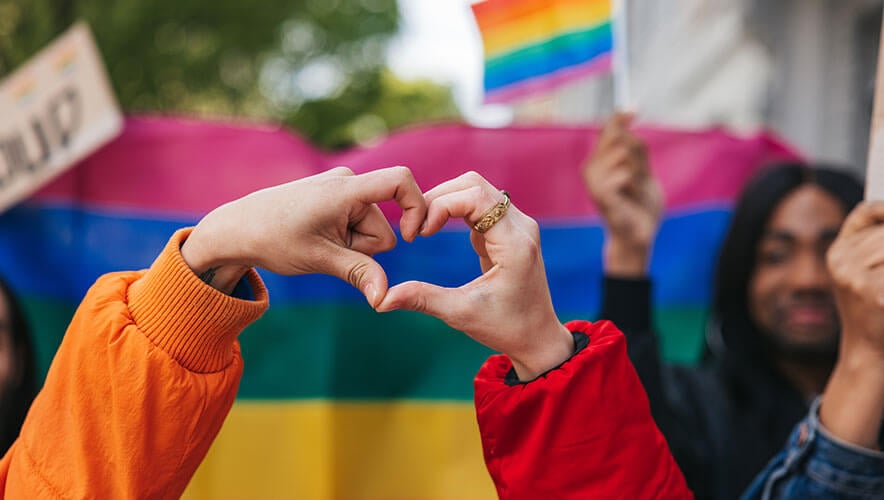Anti-LGBTQ+ Hate Crimes in U.S. Schools Spiked in 2021-2022
U.S. school hate crimes targeting lesbian, gay, bisexual, transgender, or queer (LGBTQ+) individuals rose sharply in recent years, quadrupling in states that have passed laws restricting LGBTQ student rights and education, according to Washington Post analysis of FBI data.
A wave of legislation restricting content or education about LGBTQ issues has left many students feeling especially vulnerable to bullying and harassment in school. Their fears are not unfounded. Nationwide, the number of anti-LGBTQ+ hate crimes at K-12 schools serious enough to be reported to local police doubled between 2015-2019 and 2021-2022.
The rise is steeper in the 28 U.S. states with restrictive LGBTQ laws, including those that curb the rights of transgender students at school or restrict how teachers can talk about gender or sexuality. In U.S. states that have not enacted restrictive school LGBTQ laws, the rise in hate crimes was lower, even though the absolute number of crimes was higher—the Post posited that this may be because people in these states are more likely to report incidents.
Overall, schools reported an average of 108 anti-LGBTQ+ hate crimes to the FBI per year from 2015 to 2019 on college and K-12 campuses. In 2021 and 2022, the average doubled, reaching 232. The most common crimes associated with hate crimes reported at schools include simple assault, vandalism, and intimidation.
Anti-LGBTQ hate crimes have been rising across the United States for several years, jumping more than 19 percent in 2022, according to FBI data.
“Hate crimes targeting LGBTQ people were up significantly compared with 2021, with 622 reported single-bias, anti-LGBTQ hate crimes,” The Hill reported. “Hate crimes motivated by an anti-transgender bias rose more than 35 percent year over year, reaching 338 incidents.”
LGBTQ+ advocacy groups warn that this is likely a dramatic undercount, since many hate crimes are not reported.
School hate crimes targeting LGBTQ people have sharply risen in recent years, climbing fastest in states that have passed laws restricting LGBTQ student rights and education, a Washington Post analysis of FBI data finds. https://t.co/eTPK6XRa5g
— The Washington Post (@washingtonpost) March 13, 2024
K-12 students have also exhibited increased distress in this same timeframe, with calls to emergency help lines and LGBTQ+ suicide prevention hotlines spiking. LGBTQ+ youth suicide prevention and crisis intervention non-profit The Trevor Project fielded 230,000 calls from August 2021 to July 2022; in the following 12 months, that rose to 500,000 calls. The top reason cited by callers to crisis response counselling non-profit the Rainbow Youth Project in 2023 was anti-LGBTQ+ “political rhetoric,” including debate over laws and policies limiting rights at school (noted in 63 percent of calls), the Post explained. Other primary topics broached in those calls included bullying (56 percent) and religious or church groups (47 percent)
LGBTQ+ students have long reported feeling unsafe or uncomfortable at school. A 2023 poll from the Post and KFF found that 45 percent of U.S. transgender adults felt generally unsafe at school as a child or a teenager, compared to 10 percent of cisgender adults. Participants most commonly cited five reasons why school was so stressful: bullying; access to facilities that match one’s gender identity, use of preferred names, or pronouns; the enforcement of gender roles and stereotypes; ignorance of LGBTQ topics; and callous adults.
The 2021 Youth Risk Behavior survey from the U.S. Centers for Disease Control and Prevention found that more than one in three gay, lesbian, or bisexual students were bullied on school property or online in the previous year, and for about a quarter, the bullying was at school. Among straight students, the rate was half as high.
If you or someone you know is in crisis, there are many resources available to help. For LGBTQ-based care, contact the Rainbow Youth Project or the Trevor Project. In the United States, contact the Suicide and Crisis Lifeline by calling or texting 988.










